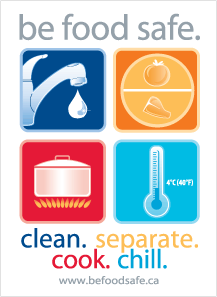Now that it’s officially Summer, I can’t wait to go on long bike rides. Biking is one of my favorite forms of exercise.
It’s a great calorie-burning, cardiovascular workout and is good, low impact
option for people prone to running injuries. If anyone is thinking about
purchasing a bike, here are some general tips. I’m not a bike professional, but
I was the supervisor at a bike camp for the past two years and learned a lot.
1.
The
type of biking you plan on doing (city, mountain, simple roads etc.) will
determine what kind to buy. I love my mountain bike for in Calgary, but it’s a
little impractical for biking to school everyday. Road bikes are great to get
around, but the cost is significantly higher and might be good to buy used if
on a budget. For simple cruising and shorter rides, I really like hybrid bikes
that combine the best of both worlds. A good bike store will be able to point
you in the right direction.
2.
How
important is comfort to you? (different seats are good to test out). If you
plan on biking for long periods of time, make sure the seat is comfortable and
suitable for your body type. I also highly recommend buying a pair of Sugoi
bike shorts, they provides lots of extra cushioning and totally worth the price
tag.
3.
How
much does the bike weight, is it heavy for its size? Cheaper bikes are heavier,
but harder to pedal and transport. I opted for a heavier bike, but wish I had
spend the extra $100 for the lighter carbon frame after having to hoist my bike
onto a bus rack every morning last summer.
4.
Does
the store you offer free yearly tune-ups or tune-ups at a reduced rate? A good
bike store should offer customers incentives like these. I like to take my bike
in every spring for a tune-up, go earlier in the year to avoid the rush.
5.
Don’t
let them sell you things that you don’t need. For example, if you are a
beginner, V-brakes are probably suitable for you. Disc brakes are more expensive
and harder to maintain, but do work better in the rain. As well, not every woman
needs to spend the extra to get a Women’s Specific Design (WSD) bike. I’m tall
and lanky, so the store worker actually talked me out of buying the WSD Trek
and I bought a man’s mountain bike instead. If you are shorter and more
“womanly” shaped, a WSD could be worth the investment.
6.
Make
sure they size you correctly for the bike and show you which adjustments are
possible BEFORE you leave the store (i.e. moving handlebars, moving the bike
seat back and forth). Also ask them to install a water bottle holder (super handy),
but don’t bother with a kickstand unless you’re under the age of ten
7.
I
personally like bikes that have “quick release” tires and seat, this makes
adjustments and transportations much easier. However, this makes the bike parts
easier to steal, so opt for a U-lock over a cable lock.
8.
Last
but not least, WEAR A HELMET. Yes they look dorky, but you will look even
dorkier when you smash your noggin and end up with permanent brain damage. I
love my Giro, because it adjust easily and has a visor to keep the sun of my
face. Buy a bike light (MEC has great selection) if you plan to be biking on
roads at night.
Biking in the Kathmandu Valley, Nepal
Happy Biking!
